Community-Centered Approach Builds Awareness, Uptake of Services and Ownership in Sierra Leone
In less than a year and a half, the Health Communication Capacity (HC3) team in Sierra Leone has taken on the challenge of contributing to improving reproductive, maternal, neonatal and child health (RMNCH) in the country. Previous blog posts have documented the many activities, from community dialogues and radio listening groups, to facility makeovers and a national RMNCH campaign. Looking back across the posts, a common theme in the titles is “building” and “rebuilding” – building trust in the health system, building community ownership of health facilities and physically rebuilding facilities.
The building/rebuilding was led by the HC3 team, including the staff based in Freetown, district coordinators based in each of the five districts where HC3 worked and implementing partner GOAL. However, the process was really driven by the communities themselves. While it may seem intuitive to work with the community and ask what they want, too often development projects do not take that approach. In several communities where HC3 worked, we heard this was the first time anyone had ever asked about their priorities. Through the community dialogues, community members and facility staff identified the major health issues in their communities and decided on what actions they would take to address those issues. Ernest Aruna, District Coordinator for Port Loko district, recognized the success of this approach, stating, “The level at which we engaged and involved the communities was in itself a success. Allowing them to take ownership and make decisions on what is best for them was a great success.”
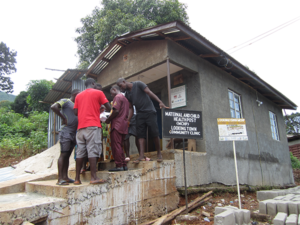
Peter Koroma discussing with the team completing the makeover of Looking Town Maternal and Child Health Post, Western Area-Urban, Sierra Leone
Community action and ownership supported the makeover activities while they were in-progress, and findings from three waves of data collection indicate positive changes in awareness and uptake of health services. By the end of the project, most facilities that benefited from makeovers were reporting higher turnout of patients for RMNCH services. Peter Koroma, District Coordinator for the Western Area, noted “We got a lot of comments and success stories from facility staff that attendance has actually increased and the deliveries at facilities has increased.” These reports are supported by survey data which showed an increase in the overall use of RMNCH services, from 66 percent to 79 percent over the past 12 months. Furthermore, surveys within participating communities indicated that overall there were statistically significant increases in awareness of family planning services (50-66 percent), infant and child health services (18-44 percent), services for newborns (26-76 percent) and immunization (51-73 percent).
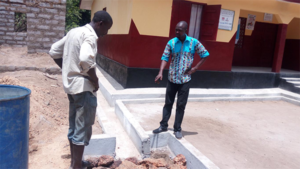
Momojah Jabbie looking over work done at Magbesa Maternal and Child Health Post in Tonkolili district, Sierra Leone.
The changes related to maternal health services offer a window into the complicated nature of the challenges that had to be overcome. Over the course of the project, there was not a significant change in awareness of maternal health services, however use of maternal health services almost doubled, increasing from 37 to 63 percent. Momojah Jabbie, District Coordinator for Tonkolili district, explained the difficult starting point, “When HC3 started in the selected operational communities, most family members were not attending ante-natal care as a result of attitudes of nurses towards patients, un-availability of drugs, devastation of the [facility] building and belief in traditional medicine.”
The HC3 activities addressed most of these factors that were impacting uptake of services and healthy behaviors, with dialogues bringing facility staff and communities together to clear the air, the facility makeovers providing much-needed repair and cleaning and the community dialogues and radio listening groups providing community members with information on the benefits of facility-based services. However, Sulaiman Kargbo, District Coordinator for Bombali district, believes that what HC3 provided to the communities was opportunity, above all else:
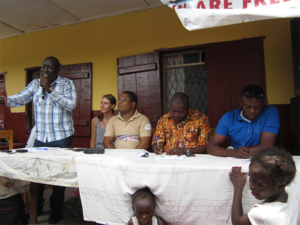
Sulaiman Kargbo thanking the community at the makeover completion ceremony at Kanikay Maternal and Child Health Post, Bombali district, Sierra Leone.
“At first, when we go to these communities we assume that the people do not know anything… but, the people have knowledge about some of these activities, only that they have not been given the opportunity. Some of the issues we are discussing with them, they already know them and they know the repercussions.”
HC3’s activities provided communities with an opportunity to listen to each other, to learn from one another and to work together to build up their community and revitalize their local health facility. This opportunity, to be involved and to demonstrate what they know and what they can do, is key to the long-term success of what was started under HC3. Kargbo explained how HC3’s approach will ensure continued impact, “The involvement of communities in the implementation of the project thereby promot[ed] community ownership.”
Community ownership of the health facilities and the overall health of the community sets the stage for sustained community involvement even after HC3’s work. Therefore, as our work concludes, HC3 congratulates the Sierra Leone team, the district coordinators and most importantly, the communities, who now have the biggest task of keeping the momentum going to improve RMNCH outcomes in their areas and throughout the country.

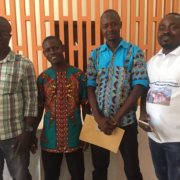
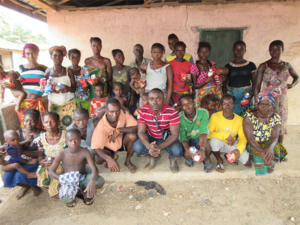






Leave a Reply
Want to join the discussion?Feel free to contribute!